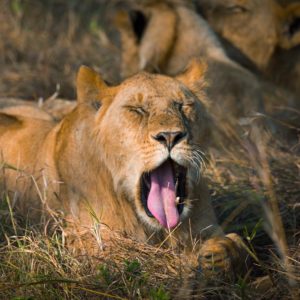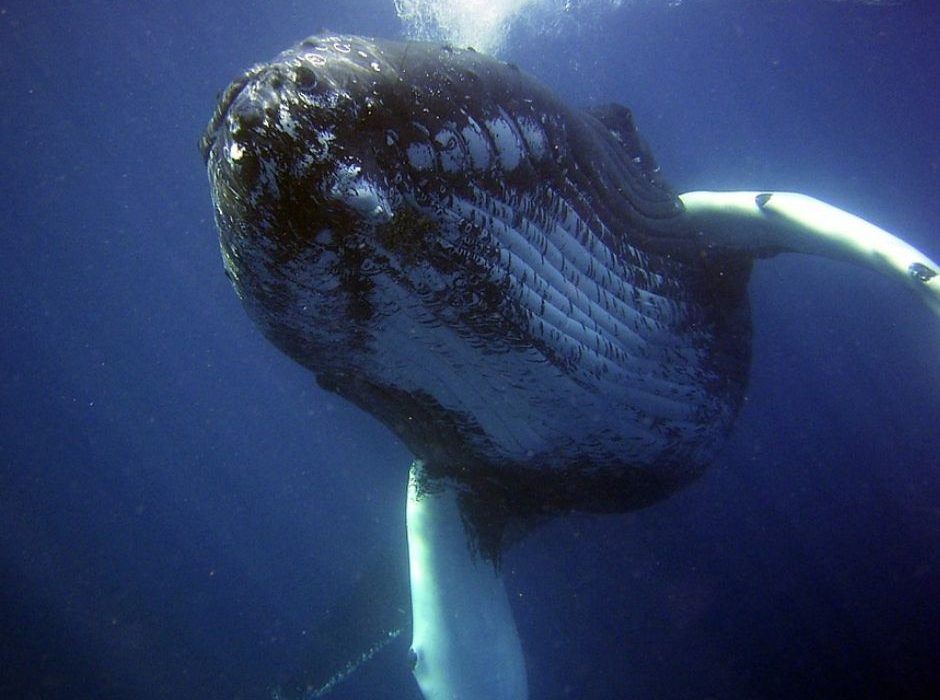
What's In This Article
When it comes to association many people, locals and tourists alike wouldn’t associate the UK with much wildlife. Often cities such as London take precedent in peoples minds. Alongside castles in Scotland and the grounds of famous universities such as Oxford . UK Wildlife, however, is ever-present and often much forgotten. Could you name 5 British animals? British animals are vast and vary throughout those animals that remain native to England compared to wild animals in Scotland. Here I showcase to you these beautiful British animals and where to find these wild animals in the UK.
If you’re looking to travel to the UK please make sure to offset the carbon released from your flight. Per person, the average person emits 1.5 tonnes of CO2 per return on a transatlantic flight. You can do this directly by clicking here.
Native Wild Animals In UK
When it comes to the UK Wildlife, in particular, land mammals we find ourselves impoverished compared to continental Europe with its huge selection of animal inhabitants. The major factor in this was due in fact to the ice age and the creation of the English channel. UK wildlife retained only land species that had crossed over prior to the formation of the channel. Alongside those that were eventually introduced to the UK.
Currently, there are 34 species of animals native to the UK that are near threatened to extinct in the wild. As assessed by the International Union of Conservation of Nature. In recent years, however, there has been an increase both in interest in the native UK wildlife and projects aimed to restore the beauty and grandeur it once had.
Eurasian Brown Bear, Grey Wolves and Lynxes.
Bears In Europe – Back in the UK?
Although there are many bears in Europe, in particular, many Brown Bears in Europe. The Eurasian Brown Bear (Ursus arctos arctos) has been extinct in the UK since the 17th Century due to over-hunting. Brown Bears in Europe have varying degrees of dense fur and aren’t always completely brown. They’ve been seen sporting fur ranging from nearly black to white, however, these are rarities (i.e. albinism) and their fur is usually brown. Although their heads are large and round they have relatively small ears. Brown Bears in Europe have reached record weights of 481 kg and 2.5 metres (8ft) in length. Generally speaking, they average between 100 – 355 kg dependent on sex. Comparatively large bears in Europe are still smaller than brown bears in countries. In places such as Alaska, Kodiak Bears can weigh up to 680 kg.
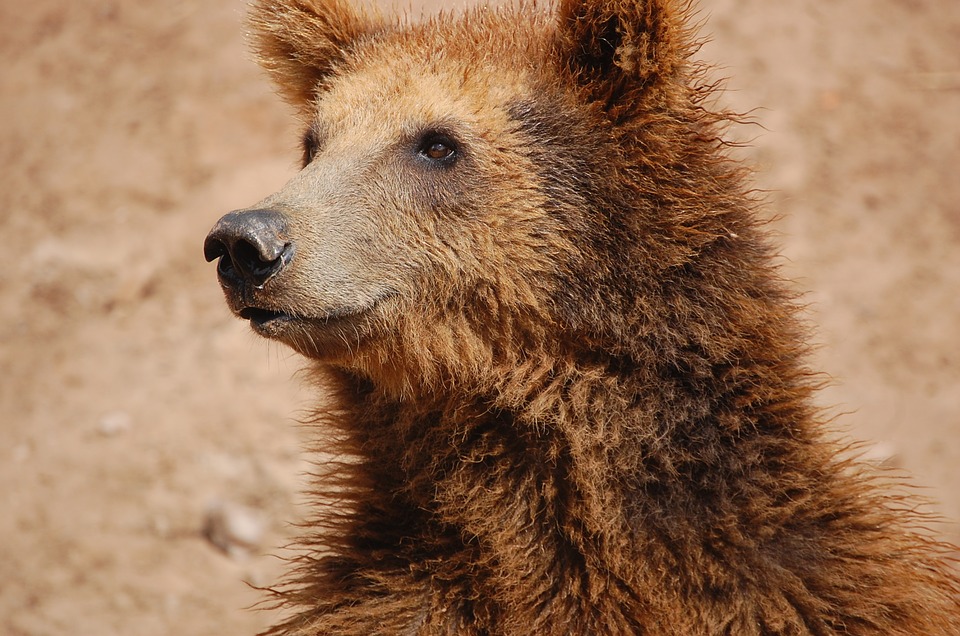
Animal Native To England
Current Conservation Status IUCN – Least Concern
Thanks to The Wild Place Project by Bristol Zoological Society. The Eurasian Brown Bear (Ursus arctos arctos) and Grey Wolves (Canis lupus) are now coexisting in an area called Bear Wood. Providing visitors with a visual experience of what British forests and woodlands may have looked over 1000 years ago. Although traditionally these animals are native to England, they have been reintroduced as part of a rewilding scheme. Which also looks to bring back Lynxes and Wolverines (G. g. gulo) into UK Wildlife.
Wolf Experience UK?
Who would have thought that hundreds of years after the extinction in England, you can now have a wolf experience in the UK? Similar to the bears in Europe the Grey wolf (Canis lupus), is still found throughout Eurasia and North America. Grey wolves are larger than other Canis species but have lesser pointed features when comparing ears and muzzles. Alike the brown bears in Europe varying in fur colour, although Grey wolves have a dominant fur colour their fur has been seen to vary geographically from grey, brown, black, cream-colour to tawny.
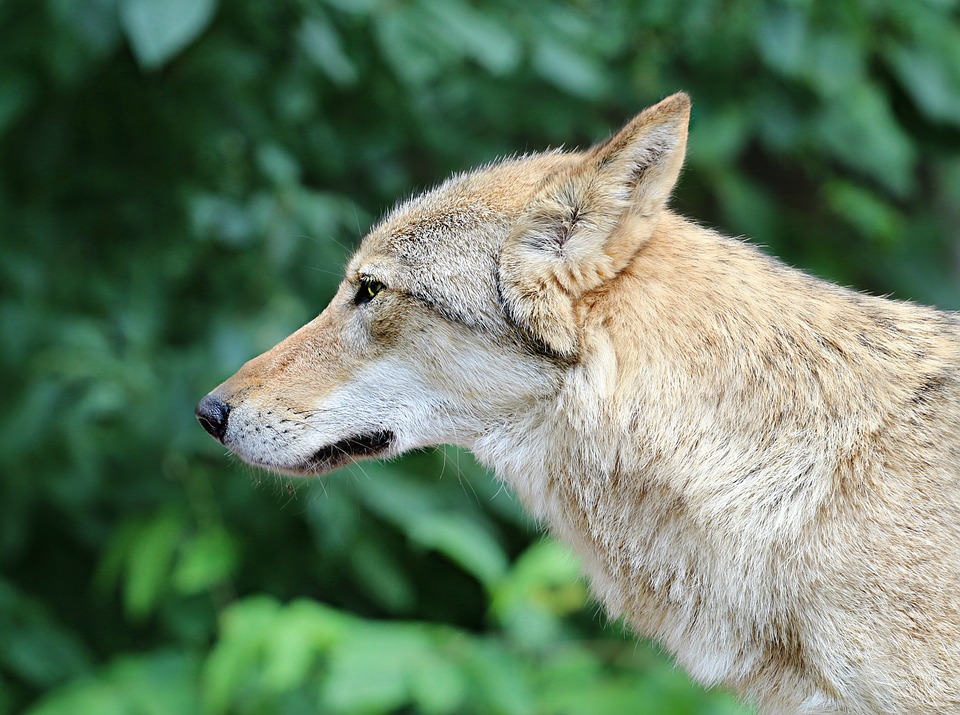
Animal Native To England
Current Conservation Status IUCN – Least Concern
Partially funded by the European Agricultural Fund for Rural Development. The Wild Place project had officially opened its gates to the public who will not only be able to have a wolf experience UK but be able to observe the Eurasian Brown Bear, Lynxes and Wolverines from raised walkways. As of now, the animals are currently kept apart. Of course with the aim to shift towards harmonious co-existence in the 10,000 sqm woodland…Once given the go-ahead by specialist keepers on the ground.
Eurasian Lynx Cat Near Me?
The Eurasian Lynx is another traditional British animal that will be joining the Eurasian Brown Bear and Grey Wolves as they return to UK wildlife. Although you may be thinking what is a lynx? You’ve heard of Brown Bears and Grey Wolves before but this seems a little less familiar. The Eurasian Lynx (Lynx lynx) unlike the bears in Europe became extinct in UK wildlife between 4,000 to 10,000 years ago. Eurasian Lynx’s are a wild cat and a rather large cat at that. The largest of the four Lynx species the Eurasian Lynx range in length from 80 to 130 cm (31 to 51 in) and standing 60–75 cm (24–30 in) at the shoulder. It has been reported the Eurasian Lynx can weigh up to 38 kg (84 lb) or reportedly even 45 kg (99 lb). A natural predator of the Deer there are hopes that the reintroduction of the Eurasian Lynx into UK Wildlife will help control Deer populations which have grown significantly due to the lack of a predator.
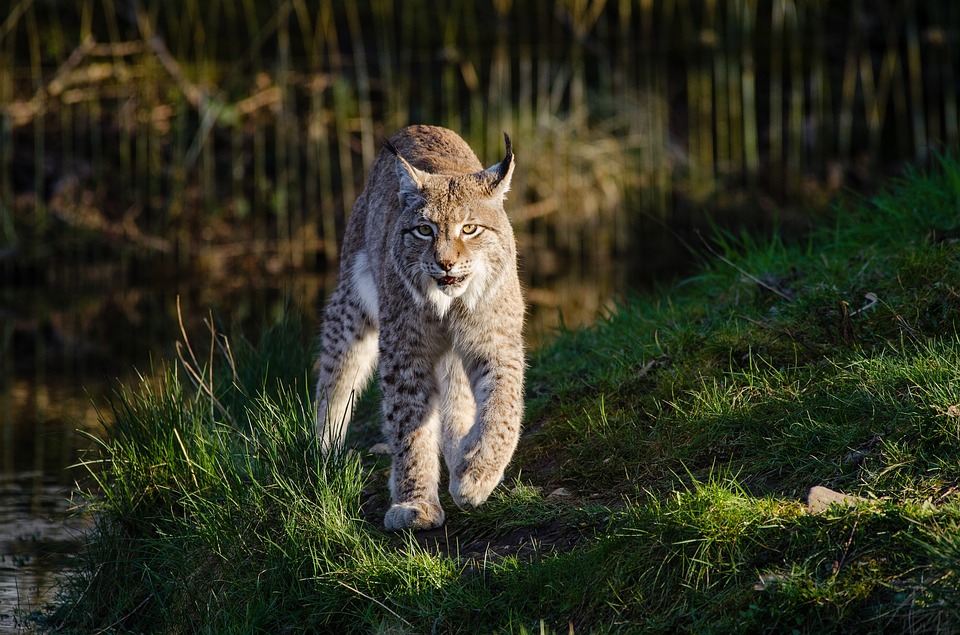
Animal Native To England
Current Conservation Status IUCN – Least Concern
The first project of its kind by Bristol Zoological Society has taken over 5 years to come into fruition. Aimed at rewilding native UK wildlife, it will be exciting to see these beautiful British animals together again. Chiefly they are aware this must be a paced project. Making sure animals are fully settled before attempting to reintegrate their habitation. This project aims to be an enriching experience for not only the society but the public. Allowing them to set foot in the ancient British woodlands and come face to face with native UK wildlife in their original habitats.
Bird Watching UK Wildlife
Puffins UK
Where to see the British coastal birds puffins in the UK? There are various types of Puffin; Tufted Puffin, Horned Puffin but the type commonly found in the UK are the Atlantic Puffin. The Atlantic Puffin (Fratercula arctica) commonly known for its small stature of 25-29 cm (10-11 Inches) and beautifully colourful beak. Atlantic Puffins are common visitors the UK and often found in large numbers on the Isle of May in Scotland.
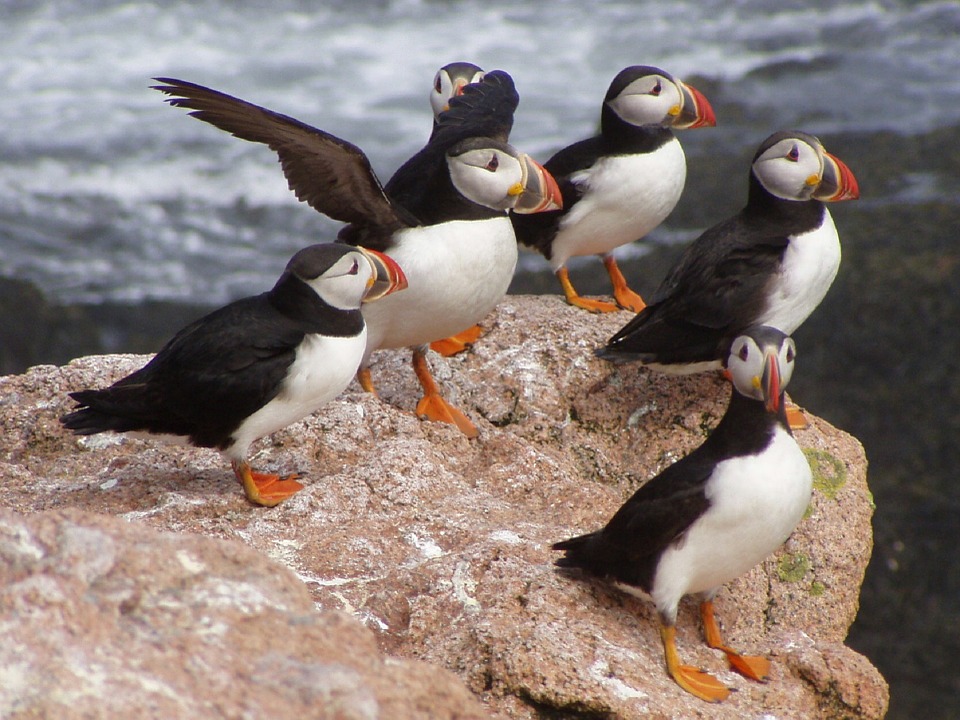
Wild Animals In Scotland
Current Conservation Status IUCN – Vulnerable
Just of the east coast of Britain, puffins can be found in numbers reaching the hundreds of thousands from April to August. Even though these numbers may seem high, Puffins are considered vulnerable by the IUCN. Their numbers have significantly crashed in recent years. Like many seabirds puffins in the UK are at significant risk from a wide range of threats. Particulary climate change, lack of food, pollution and marine litter.
One of the best places to see puffins in the UK is at the Scottish Seabird Centre in North Berwick. Although the Firth of Forth and Isle of May habitat many puffins also. In the UK North Berwick is the ideal location for puffin spotting and bird watching.
Birds of Prey Scotland – Golden Eagle
The Golden Eagle (Aquila chrysaetos) is one of the best-known birds of prey in Scotland. The Golden Eagle is a massive raptor. Varying between 66 to 102 centimetres (26 to 40 in) in length. In addition, it has a wingspan of 1.8 to 2.34 metres (5 ft 11 in – 7 ft 8 in). Not only is it one of the best-known birds of prey in Scotland. It is is one of the best-known birds of prey in the Northern Hemisphere. The Golden Eagle gets its name from the golden colour on the back of the crown and nape. Rather than the entire bird being gold, they are primarily dark brown, with some grey on the inner wing and tail.

Birds of Prey In Scotland
Current Conservation Status IUCN – Least Concern
They were originally found all over England, however, through the 18th century, their numbers declined until 1850 where the Golden Eagle was found to only remain in Scotland. Despite being the best-known birds of prey in Scotland and having no natural predators the Golden Eagle has suffered at the hands of the human population. Most recently with their exposure to organochlorine pesticides causing infertility in Golden Eagles leading to population drops.
Despite now only inhabiting 30% of their known territory, Golden Eagles have flourished in the Scottish highlands. These birds of prey in Scotland can be seen in Knapdale Forest, Argyll providing the public with several viewpoints to see these beautiful creatures. Although present throughout the year, spring and summer seasons are best, these sightings are not aimed for the novice it’s recommended to visit alongside a trained ornithologist who will best be able to spot these beautiful birds of prey in Scotland.
British Owls – The Little Owl UK
The little owl (Athene noctua) now native to the UK was introduced in the 19th Century. The Little Owl can be spotted in daylight often perching on a tree, pole, branch or rock. Their feathers tend to be a mixture of brown, cream and white with yellow and black talons alongside a tradition short hooked beak. Contrast to the Golden Eagles, the Little Owl can be found throughout the UK but rarely in Scotland, due to its preference of lowland farmland. If you find yourself visiting the English countryside you may be likely to spot these owls.
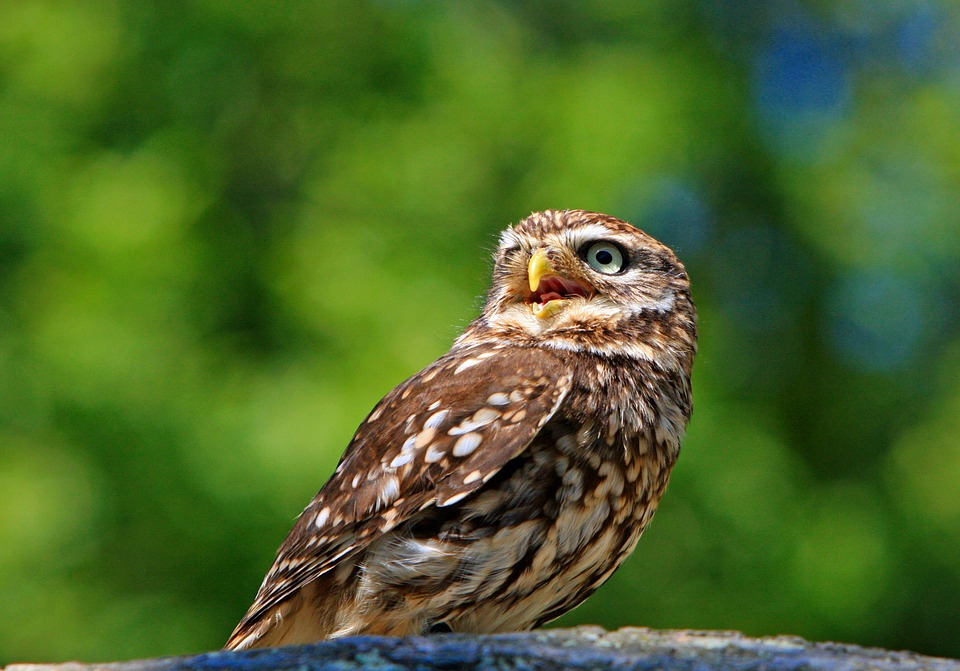
Animal Native To England
Current Conservation Status IUCN – Least Concern
Coastal UK Wildlife
Grey Seals vs Common Seal
Both the Grey Seal (Halichoerus grypus) and The Common Seal (or Harbour Seal) (Phoca vitulina) are animals native to England and found throughout UK shorelines in great number due to the fact both seals breed in British waters. Although other seals and walruses can also be spotted on UK shores. Most people would not be able to tell the Grey and Common Seal apart.
Common Seals or Harbour Seals in the UK can be seen possessing a unique pattern of spots that cover their bodies. They’re known to vary in colour brownish-black to tan or grey with lighter undersides. With a short body and flippers, the Common Seal can still reach between weights of 55 to 168 kg and heights/lengths of up to 1.85 meters (6.1 ft) long dependent on sex. A distinguishing feature is their rounded heads with V-shaped nostrils. Compared to the Common Seal the Grey Seal in the UK has a straight head profile, nostrils set well apart, and fewer spots on its body. Unlike the Common Seal reaching a maximum length of 1.85 meters (6.1 ft) the Grey Seals are known to vary between 1.6–2.3 m (6 ft 5 in–7 ft 7 in) long dependent on sex.

Animal Native To England
Current Conservation Status IUCN – Least Concern
Where to see seals?
Where to see Seals? Both British animals can be seen throughout the UK. Grey seals can be seen in their several breeding colonies around the UK such as at Blakeney Point in Norfolk, Donna Nook in Lincolnshire, the Farne Islands off the Northumberland Coast, Orkney and North Rona off the north coast of Scotland, Lambay Island off the coast of Dublin and Ramsey Island off the coast of Pembrokeshire.
Harbour seals are less abundant in UK wildlife compared to Grey Seals. Which means when it comes to questions such as “Where to see Seals?” in reference to harbour seals the locations are much vaguer such as around the coastline of the British Isles the highest populations are found around Scotland and along the eastern coast of England.

Animal Native To England
Current Conservation Status IUCN – Least Concern
Whales in British Waters
Aquatic wildlife in England is rather vibrant, much so due to the fact we are an Island. When it comes to Cetacea such as Whales and Dolphins, mostly identified by their adaption to aquatic life and spindle-shaped nearly hairless body. The UK waters have seen an abundance of these creatures over generations. In fact, around 25 different Cetacea have been spotted on UK shores at one point or another throughout history. This is not, however, representative of those sighted in modern times, Whales such as the Grey Whale (Eschrichtius robustus) was once an abundant wild animal in the UK, however, is now extinct in UK waters.
That being said 2018 was a record year for cetacean sightings in British Waters. With public spotting of orcas, minke whales, humpback whales, bottlenose dolphins, and harbour porpoises reaching the 500 sightings mark.

Current Conservation Status IUCN – Least Concern
Harbour Porpoise
One marine mammal that can be spotted all over UK shores year-round is the Harbour porpoise (Phocoena phocoena). One of the smallest marine mammals Harbour porpoises gets their name from having similar snouts to that of a pig whilst making similar sounds to a snort. In reference to its name the Harbour porpoise stays close to coastal areas or river estuaries and is often spotted by Whale watchers. Harbour porpoise are smaller than that of other porpoises growing only to 1.4 to 1.9 m (4.6 to 6.2 ft) and 61 kg (134 lb) to 76 kg (168 lb) sex-dependent. Widespread in the cooler waters of the North Atlantic, Harbour porpoises can be spotted around all UK waters.

The Harbour porpoise (Phocoena phocoena)
Current Conservation Status IUCN – Least Concern
Wild Animals In Scotland
If you’ve gotten this far, without skipping ahead, you’d be able to see by this point that throughout UK wildlife a lot happens to be based in Scotland. So you may be wondering, why are there so many more wild animals in Scotland than England or Wales?
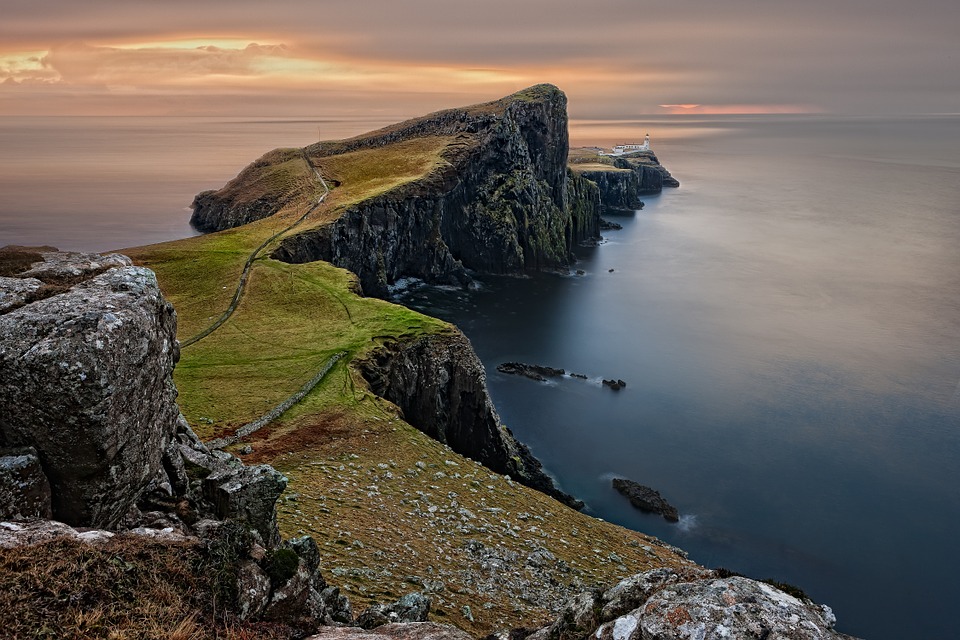
Scotland not only enjoys a diversity of temperate environments which incorporates various landscapes but of Scotland’s land is classed as agricultural (including some moorland) while urban areas account for around 3% (14% of Scotland is wooded – 17% heather moorland and peatland). Alongside 11,803 kilometres (7,334 mi) of coastline paired with 800 highlands supporting terrestrial vegetation Scotland has more than 90% of the volume and 70% of the total surface area of freshwater in the United Kingdom. This makes for ideal conditions for wild animals in Scotland to strive, so much so that they have 62 wild mammals.
Unfortunate for the rest of Britain, animals native to England and Wales are much fewer due to migration restrictions caused by the Ice age and opening of the English channel. With there being so many wild animals in Scotland, Scotland has over 8,750 square kilometres (3,380 sq mi) Special Areas Of conservation (SAC) sanctioned by the European Union’s Habitats Directive. In particular, this area also covers wild animals in Scotland’s seas as they are amongst the most biologically productive in the world and contain 40,000 or more species. 24 out of the 244 sites in Scotland are coastal with marine and non-marine elements ensuring wild animals in Scotland’s seas are protected.
Highland Ponies
Highland Ponies are not only one of the wild animals in Scotland, but they are also one of three native breeds to the Scottish Highlands and Islands. They seem to be lesser known than that of the more famous Shetland Pony. Unlike the Shetland Pony which is known for being a smaller breed, the Highland pony is one of the largest of the mountain and moorland pony breeds. The Highland Ponies over the years have adapted to the severe climatic and environmental conditions of Scotland, able to produce winter coats the highland pony forms a layer of strong badger-like hair over a soft dense undercoat, which enables it to live out in all types of weather. The height of a Highland pony is seen to vary between 13 to 14.2 hands (52 to 58 inches, 132 to 147 cm) and are mostly seen in cream, yellow and grey tones.
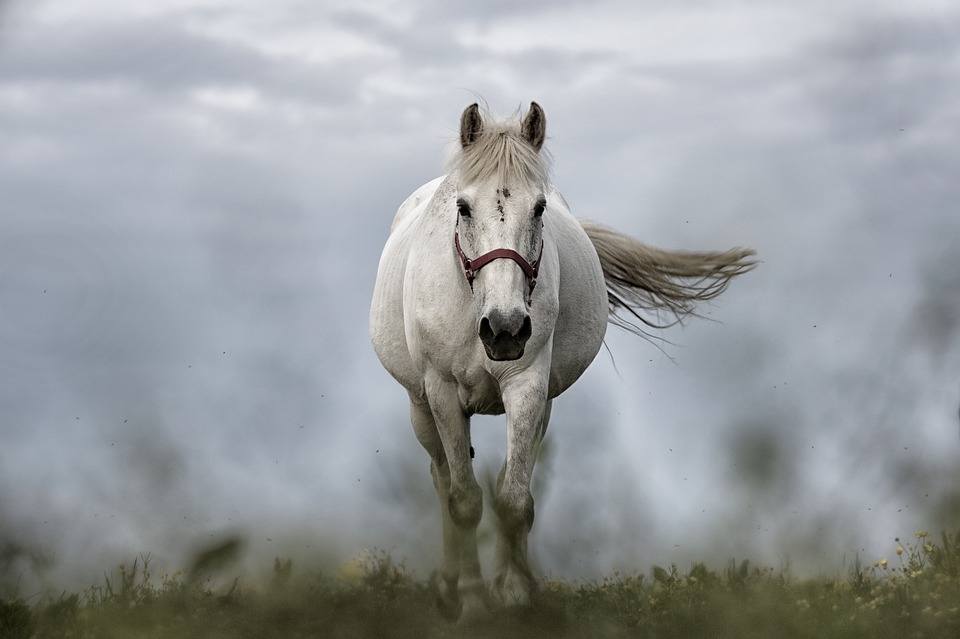
Scottish Cow – Scottish Highland Cattle
Scottish Cattle, in particular, is one of the well known British animals. The Scottish Cow also known as Scottish Highland Cattle (Bos (primigenius) taurus) has gained much fame thanks to the photography phone app Instagram. The Scottish Cow is iconically known for its long horns and long, wavy, woolly coats that vary in colours (red, ginger, black, dun, yellow, white, grey, tan and occasionally brindled). As a hardy breed, the Scottish cow is built to withstand conditions in the Scottish Highlands. The Scottish cow’s long hair allows the breed to overwinter and they are known to weigh between 500-800kg sex-dependent.
Originally the Scottish cow was kept by small farmers as house cows to produce milk and for meat and now in majority used for the latter. it is estimated that there are now around 15,000 Scottish cows (Highland cattle) in the United Kingdom, but they can also be found worldwide as throughout history the Scottish cow has been imported to Australia, Canada, Denmark, Finland and the United States.
Well, I hope you guys found this article with a look into some British Animals and UK Wildlife insightful!
Let me know if you end up travelling the UK to see any of these wild animals in the UK!
MonkOut.
Pin This Post And Share The Love.




